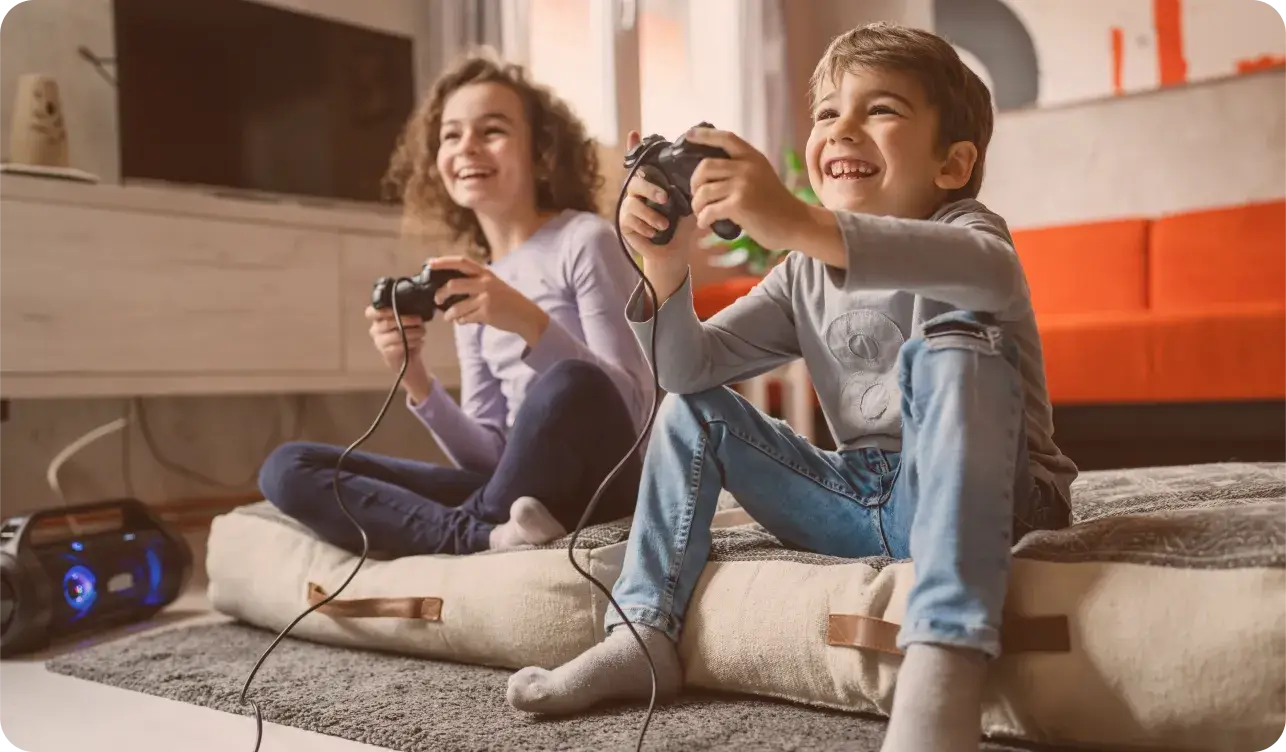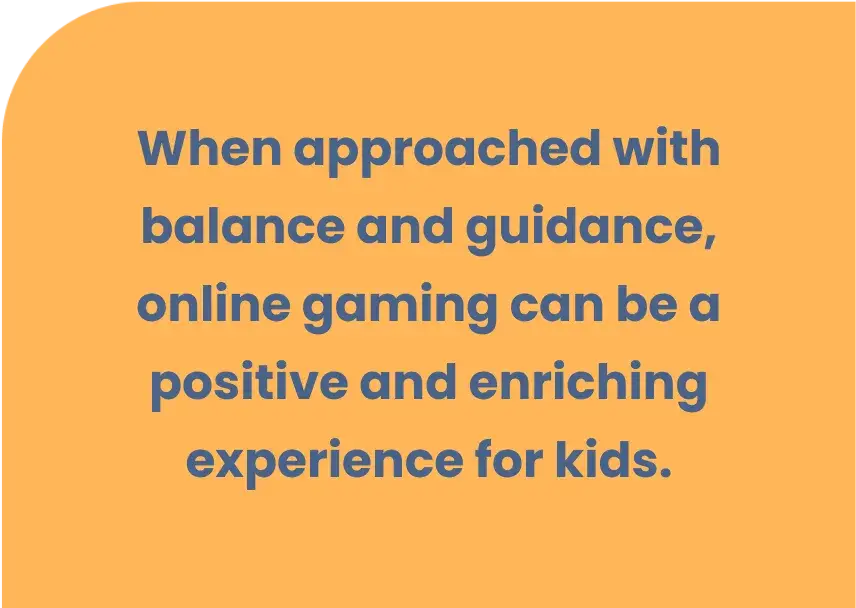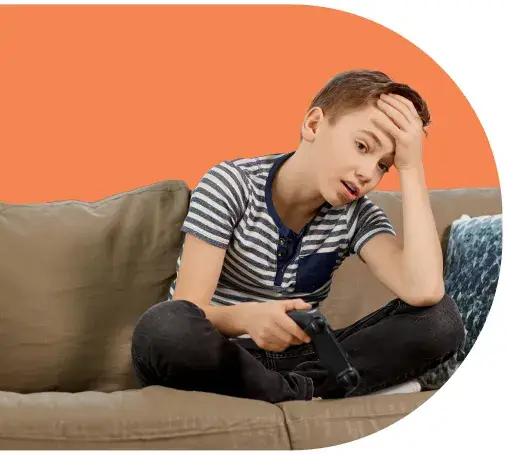The Psychology of Online Predators: Why They Target Children


Have you ever wondered what your kids are really up to when they’re using their phones or computers all day? Chances are, they’re spending a lot of that time gaming! Online gaming has become a huge part of modern childhood, and while it can be fun and even educational, there are also some important things to keep in mind as a parent.
From cyberbullying to screen time addiction, gaming comes with its own set of risks. In fact, recent studies show that excessive gaming can lead to negative mental health effects, including addictive behaviors. That’s why it’s so important for parents to be in the know about what their kids are doing online before guiding them toward healthy habits.
If you’re here to dive into the world of online gaming for kids, you’re in the right place! We’ll walk you through the benefits, different types of games, and how to manage risks along the way.
Ready to explore this world together? Let’s get started!

What You Need to Know About Online Gaming

From mission-based adventures to sports-themed challenges, online gaming offers a wide variety of experiences that can spark creativity and bring joy. It’s an exciting way for kids to engage and socialize. However, like anything, it’s all about balance. While gaming can be fun and even beneficial, it’s important to keep an eye on how much time is being spent and watch for signs of overuse or addiction.
Before diving into the world of online gaming with your kids, it’s important to understand the different types of games, the potential risks, and the benefits. That way, you’ll be able to have open, confident conversations about healthy gaming habits.

Different Types of Online Games

- Massively Multiplayer Online (MMO) Games: These allow players to interact with thousands of others in an ongoing, shared virtual world.
- First-Person Shooters (FPS): Players engage in fast-paced action from their character’s point of view, often focused on defeating opponents.
- Role-Playing Games (RPGs): In these games, players become avatars and immerse themselves in a fully created world, taking on different roles and narratives.
- Battle Royale Games: These games feature large groups of players competing to be the last one standing, with the goal of outlasting all opponents.

Understanding these different types of games can help you better connect with your kids and guide them toward safe and balanced gaming habits.
The Benefits of Online Gaming


Building Social Skills:
Online gaming can help your child develop important social skills like communication, teamwork, and cooperation. Whether they’re working with others to achieve a common goal or navigating conflicts in the game, these experiences can translate into real-life skills like negotiating, problem-solving, and collaboration.

Boosting Problem-Solving Abilities:
Many online games require kids to think critically, overcome challenges, and find solutions to complex problems. This can sharpen their problem-solving skills, which may also benefit them in school and other areas of life.



Encouraging Creativity:
Some online games allow kids to design their own avatars, worlds, or environments. These creative elements can spark their imagination and encourage them to think outside the box.

Learning New Skills:
Online gaming can also be a gateway to learning valuable skills, from strategic thinking to programming. Many games teach kids how to plan, strategize, and think logically—all while having fun.

Building Confidence:
Achieving goals or completing tasks in games can give kids a boost in self-confidence. For children who might struggle in other areas of life, gaming provides a space where they can feel successful and empowered.
What Are the Effects of Online Gaming?


The Good Stuff
- Boosts Brainpower: Online gaming can enhance mental skills like memory, attention, and strategic thinking. Just like solving puzzles, games challenge the mind and keep it sharp—think of it as a workout for their brains!
- Enhances Social Skills: For kids who might find face-to-face interactions tricky, online games provide a fun way to connect with others. Many games require teamwork and cooperation, allowing children to practice communication and relationship-building in an engaging environment.
- Develops Useful Skills: Some games even teach real-world skills! Strategy games can improve planning and decision-making abilities, while others foster creativity and problem-solving. Plus, there are games that introduce kids to coding, giving them a sneak peek into the world of programming.


The Not-So-Good Stuff
- Screen Time Overload: Moderation is key! Spending too much time in front of screens can lead to issues like sleepless nights, eye strain, and even neglecting physical activities and homework. Balance is crucial to ensure gaming remains a fun part of their routine without taking over.
- The Dark Side of Online: The internet isn’t always as bright as it seems. Kids may encounter negative content like violence or hate speech in online games, and they can also fall victim to cyberbullying, which can be really upsetting.
- Screen Time Overload: Moderation is key! Spending too much time in front of screens can lead to issues like sleepless nights, eye strain, and even neglecting physical activities and homework. Balance is crucial to ensure gaming remains a fun part of their routine without taking over.
By being informed about both the positives and the challenges of online gaming, you can help your kids enjoy a balanced gaming experience that fosters growth while minimizing risks.
How to Build a Healthy Gaming Lifestyle for Kids
Open Communication
When it comes to keeping your kids safe online, open communication is key! Start by discussing responsible gaming habits and the importance of respectful interactions. It’s vital for your child to understand how to treat others kindly, even in the gaming world.
Encourage them to come to you if they encounter anything unsettling during their online adventures. A strong, communicative bond will make it easier for them to share their experiences with you. Be sure to cover online safety best practices, like using strong passwords, enabling two-factor authentication, and never sharing personal information.
Show genuine interest in their gaming activities by asking about their favorite games and who they’re playing with. Open, honest conversations will help build trust and give you a chance to address any concerns. Here are some strategies to communicate effectively:
- Schedule regular check-ins to chat about their gaming experiences.
- Listen actively when they share, and show that you’re interested.
- Avoid judgment—try to understand their perspective instead.
- Share examples that highlight the importance of responsible online behavior.

Screen Time Recommendations
0 hrs
Infants (less than 1 year)
0 hrs
Children 1 year old
<1 hr
Children 2 years old
<1 hr
Children 3-4 years old

Finding Age-Appropriate Games
Choosing the right games is crucial. Make sure the games your child wants to play are suitable for their age. The Entertainment Software Rating Board (ESRB) and Pan European Game Information (PEGI) provide ratings that classify games based on their content, including violence, language, and sexual content. Always check the ratings before letting your child dive into a new game.
Read reviews to get a better understanding of the game’s content and its suitability. If you can, try playing the game yourself before giving your child the green light. This firsthand experience will help you gauge whether it’s appropriate for them.

Setting Time Limits
Just like with any other activity, it’s important to regulate screen time. Setting limits ensures that gaming doesn’t interfere with homework, exercise, or socializing. Younger kids typically need shorter screen time than older ones, as they can’t handle prolonged exposure as well.
Talk to your child about why setting screen time limits is necessary. This will help them understand the reasoning behind it and feel involved in the decision-making process. Using a timer can be a fun way to manage their screen time—when the buzzer rings, it’s time to switch it up and do something different!

Establishing Ground Rules
As a parent, it’s essential to establish clear rules for online gaming. This helps your child understand what’s acceptable behavior when using the internet. Discuss your expectations regarding conduct, such as avoiding foul language, not cheating, and never revealing personal information to strangers.
Have a heart-to-heart about why online safety is important. Explain the risks of talking to people online and the dangers of sharing personal info. For more tips, check out our guide on online safety strategies to help protect your kids from potential threats.
If a game has in-game purchases, set limits on how much they can spend. This teaches them to manage their money and maintain balance in their gaming and real-life activities.
By fostering open communication, setting reasonable limits, choosing age-appropriate games, and establishing ground rules, you can help your kids enjoy gaming safely while developing healthy habits!

Parental Controls and Monitoring Tools
Today’s gaming devices and platforms come packed with parental controls and monitoring tools to help you keep your child’s gaming experience safe and enjoyable. These handy features allow you to manage screen time, block specific games or websites, and keep an eye on your child’s activity online. It’s worth taking some time to explore the parental controls available on the devices and platforms your child loves.
Make sure to set up parental controls tailored to your child’s age and unique needs. Regularly check in on their activity to ensure they’re sticking to the ground rules you both established. Understanding how and why to use parental controls can empower you to create a safer gaming environment for your kids. By staying informed and involved, you can help them navigate the online world responsibly!

Tackling the Challenges of Online Gaming for Your Kids

Cyberbullying
One of the biggest concerns in the online gaming world is cyberbullying, which can seriously impact your child’s mental health. If you notice any signs of distress in your child, it’s time to take action. Keep an eye out for behaviors like:
- Becoming withdrawn or upset
- Avoiding online activities
- Struggling with sleep or appetite
- Complaining of physical symptoms like headaches or stomachaches


Online Predators
Online predators can pose a real threat, often pretending to be kids or teens to gain your child’s trust and manipulate them. It’s crucial to teach your kids how to spot and steer clear of these dangers. Here are some essential tips to keep them safe:
- Never share personal information with strangers online. This includes anything that could reveal their identity, like their age, school name, or home address.
- Be cautious of anyone asking for personal details. If something feels off, it probably is!
- Don’t agree to meet up with someone they’ve only met online. It’s always better to play it safe!

Inappropriate Content
While gaming can be a lot of fun, some online games may expose kids to inappropriate content like hate speech, violence, or sexual material. It's important to educate your child on how to recognize and avoid this type of content. Here are some helpful tips:
- Utilize parental controls to restrict access to certain games and websites, ensuring your child can only explore safe spaces.
- Keep the lines of communication open. Encourage your child to talk to you about any content that makes them uncomfortable or that they don’t understand.
- Explore reporting options for any inappropriate content they encounter. Most games have customer service teams that take these issues seriously and can take action.

Conclusion
There’s no denying that online gaming can be a blast and offers tons of enriching experiences! To make the most of these adventures for your kids, it’s important to set healthy boundaries and be aware of the risks involved. By fostering open communication, learning how to establish those boundaries, and utilizing parental controls, you can help your child enjoy the positives of online gaming while minimizing the negatives.
If you’re feeling unsure about where to begin, don’t worry—Troomi is here to help! We offer parental control apps and educational resources to guide you on this journey. Visit our official website to connect with us and discover how we’re dedicated to creating a healthy online gaming environment for children and teens.
Take the first step toward a safe and enjoyable online gaming experience by subscribing to Troomi’s free parental educational content today!

